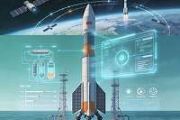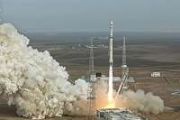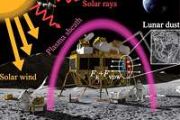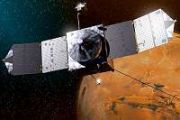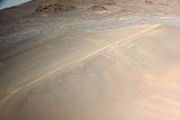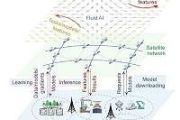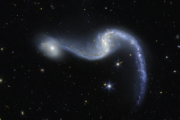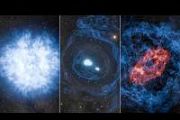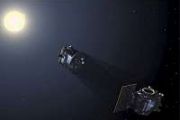
Copernical Team
Latest Vega launch paves way for Vega-C
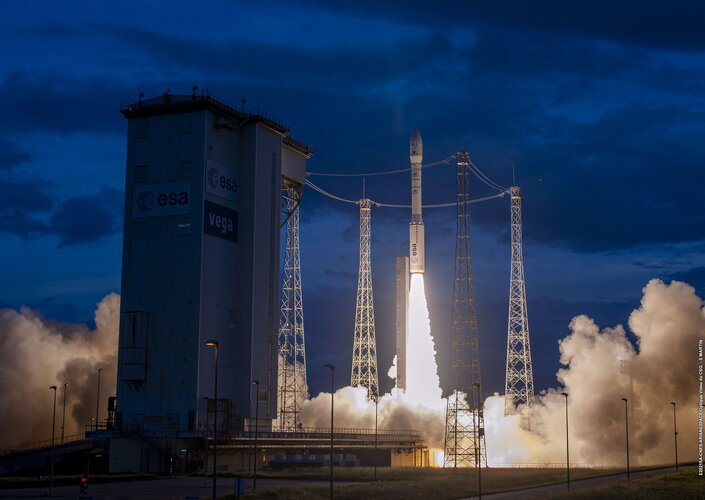
Arianespace announced liftoff of Vega’s twentieth flight from Europe’s Spaceport in French Guiana at 9:27 GMT (10:27 CET; 06:27 local time). Vega delivered three CERES payloads for the French Ministry of the Armed Forces.
Astronauts shelter in space capsules as debris comes close to ISS
 The seven astronauts working aboard the International Space Station were forced to take shelter in their space capsules as a cloud of debris moved toward the station on Monday.
While the debris eventually moved away from the ISS, NASA's mission control in Houston advised the astronauts to seek refuge to avoid a collision that might require them to return to Earth.
The U.S State D
The seven astronauts working aboard the International Space Station were forced to take shelter in their space capsules as a cloud of debris moved toward the station on Monday.
While the debris eventually moved away from the ISS, NASA's mission control in Houston advised the astronauts to seek refuge to avoid a collision that might require them to return to Earth.
The U.S State D Blue Canyon Technologies selected by Ball Aerospace to supply spacecraft bus for NASA Solar Cruiser Program
 Small satellite manufacturer and mission services provider Blue Canyon Technologies LLC, a wholly-owned subsidiary of Raytheon Technologies Corporation, was selected by Ball Aerospace to develop a standardized X-SAT Venus ESPA-class microsatellite bus and several custom components to enable an upcoming one-of-a-kind mission with NASA for the Solar Cruiser project.
As the largest planned so
Small satellite manufacturer and mission services provider Blue Canyon Technologies LLC, a wholly-owned subsidiary of Raytheon Technologies Corporation, was selected by Ball Aerospace to develop a standardized X-SAT Venus ESPA-class microsatellite bus and several custom components to enable an upcoming one-of-a-kind mission with NASA for the Solar Cruiser project.
As the largest planned so The first black hole image: A gravitomagnetic monopole as an alternative explanation
 The Event Horizon Telescope (EHT) has recently mapped the central compact object of the galaxy M87 with an unprecedented angular resolution. Though the remarkable breakthrough has been interpreted based on theory that M87 contains a rotating or "Kerr" black hole.
New research published in EPJ C by Chandrachur Chakraborty and Qingjuan Yu at the Kavli Institute for Astronomy and Astrophysics
The Event Horizon Telescope (EHT) has recently mapped the central compact object of the galaxy M87 with an unprecedented angular resolution. Though the remarkable breakthrough has been interpreted based on theory that M87 contains a rotating or "Kerr" black hole.
New research published in EPJ C by Chandrachur Chakraborty and Qingjuan Yu at the Kavli Institute for Astronomy and Astrophysics NASA Administrator Statement on Russian ASAT Test
 On Monday Moscow Standard Time, the International Space Station (ISS) Flight Control team was notified of indications of a satellite breakup that may create sufficient debris to pose a conjunction threat to the station. NASA Administrator Bill Nelson released the following statement about the incident:
"Earlier today, due to the debris generated by the destructive Russian Anti-Satellite (A
On Monday Moscow Standard Time, the International Space Station (ISS) Flight Control team was notified of indications of a satellite breakup that may create sufficient debris to pose a conjunction threat to the station. NASA Administrator Bill Nelson released the following statement about the incident:
"Earlier today, due to the debris generated by the destructive Russian Anti-Satellite (A LeoLabs Australia's Space Tracking Centre releases first images of Russian space debris field
Still lots to do at the Zechstein drill locale
 We are in the midst of the Zechstein drilling campaign. The SAM team are eagerly waiting for the results of their weekend EGA analysis on the drilled sample. Depending on the results, we might move onto characterizing the dumped sample with our contact science instruments and ChemCam in the next plan.
Anticipating the return to contact science within the nex
We are in the midst of the Zechstein drilling campaign. The SAM team are eagerly waiting for the results of their weekend EGA analysis on the drilled sample. Depending on the results, we might move onto characterizing the dumped sample with our contact science instruments and ChemCam in the next plan.
Anticipating the return to contact science within the nex Curiosity helping make Mars safer for astronauts
 A radiation sensor aboard the spacecraft is providing new data on the health risks humans would face on the surface. Could lava tubes, caves, or subsurface habitats offer safe refuge for future astronauts on Mars? Scientists with NASA's Curiosity Mars rover team are helping explore questions like that with the Radiation Assessment Detector, or RAD.
Unlike Earth, Mars doesn't have a magneti
A radiation sensor aboard the spacecraft is providing new data on the health risks humans would face on the surface. Could lava tubes, caves, or subsurface habitats offer safe refuge for future astronauts on Mars? Scientists with NASA's Curiosity Mars rover team are helping explore questions like that with the Radiation Assessment Detector, or RAD.
Unlike Earth, Mars doesn't have a magneti CO2 cold traps offer potential Lunar resource
 The existence of carbon dioxide (CO2) cold traps on the Moon has been confirmed, offering a potential resource for future exploration of the lunar surface, according to a new paper by Planetary Science Institute Senior Scientist Norbert Schorghofer.
"After water, carbon is probably the most important resource on the Moon. It can be used for the production of rocket fuel, but also for bioma
The existence of carbon dioxide (CO2) cold traps on the Moon has been confirmed, offering a potential resource for future exploration of the lunar surface, according to a new paper by Planetary Science Institute Senior Scientist Norbert Schorghofer.
"After water, carbon is probably the most important resource on the Moon. It can be used for the production of rocket fuel, but also for bioma NASA may not land people on moon again until 2027, new audit says
 Despite U.S. goals to land people on the moon again by 2024, delays of several years are likely, according to a NASA watchdog audit released Monday.
Former Vice President Mike Pence set that 2024 goal in a 2019 speech, giving NASA just five years to accomplish the feat.
While NASA reinforced the practicality of that goal for a long time, NASA Administrator Bill Nelson said Tuesda
Despite U.S. goals to land people on the moon again by 2024, delays of several years are likely, according to a NASA watchdog audit released Monday.
Former Vice President Mike Pence set that 2024 goal in a 2019 speech, giving NASA just five years to accomplish the feat.
While NASA reinforced the practicality of that goal for a long time, NASA Administrator Bill Nelson said Tuesda 
